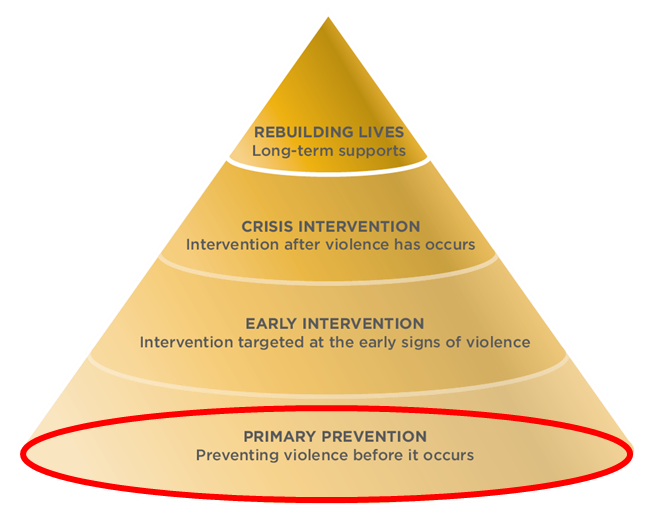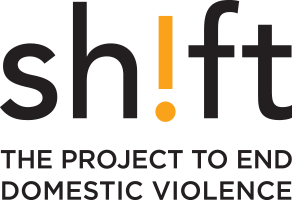Building Alberta’s Primary Prevention Framework – Alberta-made Solutions to Prevent Domestic and Sexual Violence
Shift: The Project to End Domestic Violence (University of Calgary) and Sagesse/IMPACT are excited to announce its request for applications for presenters at the IMPACT Virtual Summit held on March 16-17, 2021. Our Summit theme this year is, “Building Alberta’s Primary Prevention Framework.”


Shift: The Project to End Domestic Violence is located in the Faculty of Social Work at the University of Calgary. Our purpose is to advance effective primary prevention strategies. For ten years, we have dedicated ourselves to conducting research with diverse stakeholders to create the social conditions that stop violence before it stops – at home, across the country, and around the world. Through our partnership with IMPACT, we aim to work with systems, institutions, and the human service sector to collectively develop the will and skills to design, implement, and scale an evidence-informed primary prevention framework for Alberta.
IMPACT is a provincial collective impact initiative whose purpose is to eradicate domestic and sexual violence. Our members include over 250 organizations, systems, business, and government representatives. As a collective we are creating a movement to achieve our goal, capitalizing on the strength of existing networks. We are using the resources, ideas, and influence of our collective membership to instigate systemic change in provincial perspective, practices, policies, and legislation.
The project partners gratefully acknowledge the Maxbell Foundation, Government of Alberta – Community and Social Services and Silver Gummy Foundation for their support in funding this project.
The Summit has two key goals:
- To inspire IMPACT members to engage in the primary prevention of domestic and sexual violence.
- To update IMPACT members on our work, focusing specifically on the “Building Alberta’s Primary Prevention Framework” project.
We hope you will consider submitting an application to present at the Summit!
Information about presentations:
Goals of the presentations:
- To support IMPACT members to understand the application and impact of primary prevention by showcasing “made-in-Alberta” primary prevention approaches.
- To integrate Alberta-made primary prevention solutions in Alberta’s Primary Prevention Framework.
Target audience: Any member of IMPACT.
Length of presentation: 30-minute presentation + 20-minute discussion = 50 minutes total.
*While we encourage you to co-present with project partners from different organizations, please note that you should take into account the length of the presentation (30 minutes) when identifying co-presenters.
Deadline for application submission: Monday December 7, 2020.
Presentation criteria
We will consider presentations that provide the following:
- An appealing and relevant presentation title, description, as well as content that speaks to the goals of the Summit and the target audience.
- Alignment between the presentation and the Summit’s focus on primary prevention approaches to prevent domestic and sexual violence in Alberta.
Selection criteria
Applications will be reviewed by at least two reviewers (from the University of Calgary/Shift and/or Sagesse/IMPACT) who will use the rubric below to evaluate and select presentations.
- Relevance to the Summit goals and theme
- Clarity of the application
- Relevance to research/theory/practice
- Focus on working with equity-seeking groups (i.e., Indigenous people, racialized people, people who identify as LGBTQS2+, people with disabilities, people living in poverty, people who are homeless, etc.)
Our selection process will also take into account the value that we place on multiple ways of knowing and our belief that knowledge is acquired through many sources. See “Additional Information” for more information.”
Acceptance
If your proposal is accepted, you will be notified by early-January and asked to:
- Register for the Summit.
- Review a series of recommendations to guide the development of your presentation.
- Submit your Power Point Slides, Handout (PDF files), data charts, and other materials in advance of the Summit dates.
- Submit a post-Summit summary about your presentation for potential publication in Alberta’s Primary Prevention Frameworks as a case study.
- Based on time, we will only be able to accept approximately 15 presentations.
Click here to download IMPACT Summit 2021 – Call for Presentations
Additional Information
Our selection process will take into account the value that we place on multiple ways of knowing and our belief that knowledge is acquired through many sources:

Source: Grinnell, R., Williams, M., & Unrau, Y. (2016). Research Methods for Social Workers. Michigan: Pair Bonds.
We also believe there are many forms of evidence. Using the below classifications, our selection process will take into the account the goal of showcasing different forms of evidence.
|
Classification of approach |
Description |
|
Emergent/innovative approaches |
|
|
Promising approaches |
|
|
Research-informed approaches |
|
|
Evidence-based approaches |
|
Adapted from: http://www.learningtoendabuse.ca/our-work/pdfs/Report-Crooks_JaffePrimary_Prevention_VAW_Update.pdf
| Primary prevention approach | Strategies |
|
Inform policy and practice through research, monitoring, and evaluation |
|
|
Coordinate and collaborate to strengthen primary prevention across stakeholders |
|
|
Drive uptake of established best practice primary prevention approaches |
|
|
Promote gender equality |
|
|
Promote social norms that protect against domestic and sexual violence |
|
|
Teach safe and healthy relationship skills to prevent domestic and sexual violence |
|
|
Engage influential adults and peers |
|
|
Disrupt the developmental pathways toward partner violence |
|
|
Create /support protective environments |
|
|
Strengthen economic supports for families |
|
Source: https://www.vichealth.vic.gov.au/~/media/ProgramsandProjects/DiscriminationandViolence/PreventingViolence/framework%20web.ash
Primary prevention, early intervention, crisis intervention, and long-term support – A spectrum of approaches
To understand what primary prevention is, it is helpful to consider what primary prevention is not. While all types of prevention and intervention are important and needed, the IMPACT Summit focuses on primary prevention and does not focus on intervention.
Early intervention (also known as secondary prevention) is “targeted at individuals and groups who exhibit early signs of perpetrating violent behaviour or of being subject to violence.” One example of early intervention would be having nurses and doctors screen for domestic violence in emergency rooms. Even if a patient is not ready to leave an abusive relationship, health care practitioners play an important role by providing access and referrals to supports.”
Crisis intervention (also known as tertiary prevention) involves providing support and treatment to those already affected by family violence, as well as interventions to reduce the impact of violence once it has been reported. For victims, this includes such strategies as counselling and health care responses, while for the offenders it includes offender treatment programs and other judicial responses. The focus here is on reducing the harmful consequences of an act of violence after it has occurred, and on long-term care in the wake of violence, for example, rehabilitation and reintegration to reduce long-term trauma.
Long-term supports focus on rebuilding lives and invest in long terms supports (like housing, counseling, financial literacy) to support intergenerational change. ”
Below is a visual to describe the relationship among primary prevention, early intervention, crisis intervention, and long-term supports. While all types of prevention and intervention are important and necessary, the IMPACT Summit will focus on showcasing examples of primary prevention approaches in Alberta.



